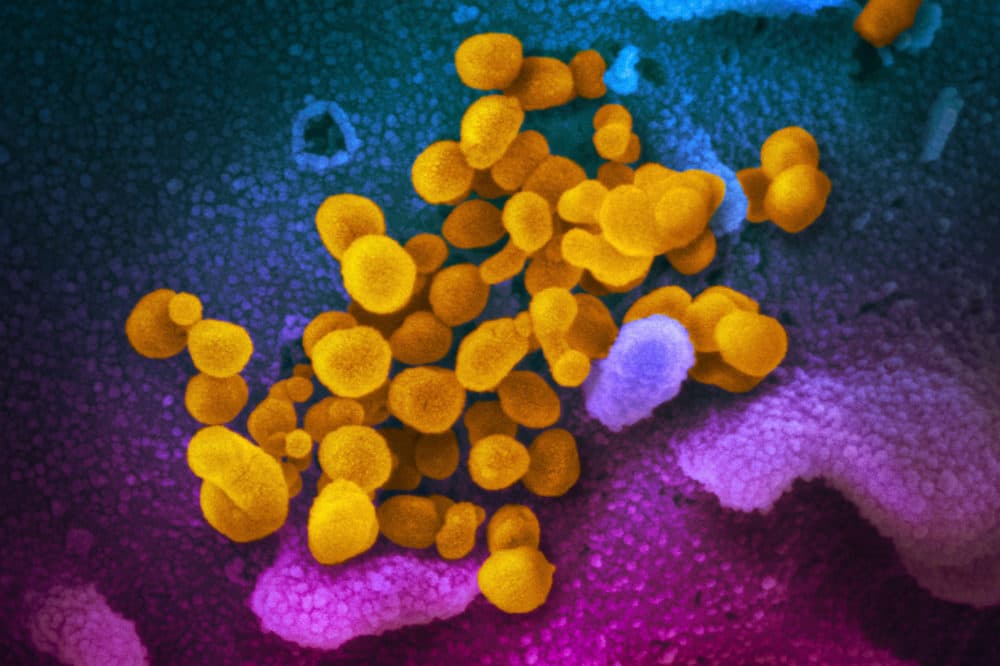Advertisement
commentary
I'm A Doctor Who Got COVID-19. Here's What I Learned

The past few weeks have been especially surreal for Dr. Aparna Raj Parikh, a specialist in gastrointestinal cancers at Massachusetts General Hospital. Here, she shares her painful story of getting — and possibly spreading -- COVID-19, replete with lessons learned and the challenges ahead.
Things were incredibly different in early March. Big meetings were getting cancelled, travel restrictions were starting to spread across the country. However, we weren’t socially distancing yet at work. When I started feeling mild symptoms, mainly a dry cough, I called in but was told I didn’t qualify for testing. I was told I was fine to stay at work, so, as we do, we work. I had a full couple of days of patients that needed my care. I had no known exposures, no contact with the Biogen meeting linked to the bulk of the original known cases in the Boston area.
So I went on with my life as usual, and by doing so, exposed a large number of my dear colleagues and friends and staff. I exposed some of the most vulnerable of patients in face-to-face visits. I taught trainees. I met with our research teams. I went to the gym. I dropped off the kids one day at school. I exposed our nanny. I exposed some others who were in and out of the house. I exposed my parents, who were with us. I exposed friends. I exposed my husband and my kids. All without knowing.
My symptoms became a bit worse — cough and then some mild shortness of breath — and a few days later, I was told to get tested. When the test came back positive, my husband, an interventional pulmonologist and intensive care physician at Beth Israel Deaconess Medical Center, and I were stunned. I'll never know where I got it. I could have picked it up anywhere, as we know it's far more widespread than we can currently understand given testing limitations.
As word trickled down the Mass. General grapevine, naturally there were people who were scared about their own exposures to me and reached out trying to recall how much contact we had. Overall, I was showered with love and incredible support. But I couldn't be so kind to myself.
My husband and I quickly adjusted our household life. I quarantined in the basement. None of us could leave the house. He took charge of the kids and everything else, including virtual care for his own patients and attending critical planning meetings as his hospital braced for the outbreak. For me, the two weeks of isolation were a journey to the other side of immense guilt. Tears were cathartic. As a provider, colleague, friend and family member, I waited with enormous anxiety, praying that people stayed well and that those with symptoms tested negative. Many colleagues and dear friends were furloughed and also isolated from their families.
Our oath is to first do no harm, and I couldn’t stop replaying those few days and the unintentional harm I'd caused. A friend likened it to the early days of the HIV epidemic, when people unwittingly passed the virus along without understanding transmission. Our system wasn’t ready, our country wasn’t ready, she said: poor testing, lack of knowledge, lack of leadership, lack of appropriate messaging, lack of infrastructure and, as she put it, “other-blame” and self-recrimination.
In the end, I know of no one who came into contact with me and tested positive.
As I prepared to end my home isolation, I looked forward to hugging my family and donating my blood for antibody testing, which will really help us understand population-level exposure and immunity, and could even treat patients. I am not sure if my husband, Mihir, and our children are asymptomatic carriers, but I sure wish we knew. The data on people who have been infected becoming immune looks reassuring, but frankly, we just don’t know, and we will all be living with these unknowns in the days and months ahead.
I worked virtually throughout my isolation, but on Wednesday I return to seeing outpatients in the oncology clinic. However, my assignment could soon change: I am waiting among a group of 30 or so oncologists who are ready to be deployed for at least eight weeks to help cover the inpatient COVID-19 units. Similar moves are happening across all departments, across all hospitals and states.
I’m not sure even what next week will look like, let alone eight weeks from now. All I know is that we'll continue to do our small parts.
Mihir has now started a two-week stint in the Intensive Care Unit. We are living with baseline angst alongside all of our health care worker friends and family and everyone else. We are praying for the safety of our loved ones and yours. Daily gratitudes have and will continue to sustain me. There is still so much gratitude for health, for actually having the luxury to self-quarantine comfortably in my basement, for an abundance of food, much of which was kindly dropped off for us, for the ability to protect ourselves, for having a paycheck, for an amazing nanny and for Zoom! To much of the world, these luxuries are non-existent.
We are all in this together. Stay home. Protect each other. Protect your loved ones. Protect the most vulnerable. Be kind. Check in on people. And to all the front-line workers and those directly or indirectly supporting front-line workers, including grocery workers, child-care support, hospital materials and grounds — thank you.
A dear friend told me, "Resilience isn’t flying through without tears. You don’t need resilience to get through the easy stuff. Resilience is being knocked down by something, struggling through the mud, and standing up again, even if limping and on one leg, but standing up to fight another day."